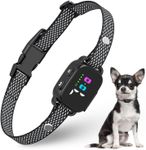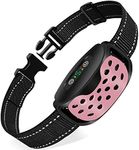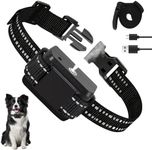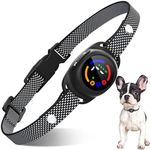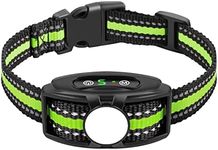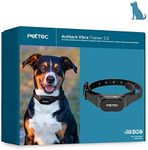Buying Guide for the Best Anti Bark Collars
Choosing the right anti-bark collar for your dog involves understanding your pet's needs and the features of the collar. Anti-bark collars are designed to reduce excessive barking by delivering a stimulus when your dog barks. It's important to select a collar that is safe, humane, and effective for your dog's size, temperament, and barking habits. Consider the type of stimulus, the collar's adjustability, and any additional features that may enhance its effectiveness and comfort for your dog.Type of StimulusThe type of stimulus is the method the collar uses to deter barking. Common types include static shock, vibration, sound, and spray. Static shock collars deliver a mild electric shock, vibration collars use a vibrating mechanism, sound collars emit a high-pitched noise, and spray collars release a burst of citronella or air. The choice of stimulus is important because it should be effective yet humane for your dog. If your dog is sensitive, a sound or vibration collar might be more appropriate, while a more stubborn dog might respond better to a static shock or spray collar. Consider your dog's temperament and sensitivity when choosing the type of stimulus.
AdjustabilityAdjustability refers to the ability to change the collar's settings to suit your dog's needs. This can include adjusting the intensity of the stimulus, the sensitivity to barking, and the fit of the collar. Adjustability is important because it allows you to customize the collar to be as effective and comfortable as possible for your dog. For example, a collar with adjustable intensity levels can be set to a lower level for a more sensitive dog or a higher level for a more stubborn dog. Ensure the collar fits well and can be adjusted as your dog grows or if you have multiple dogs of different sizes.
Size and FitSize and fit are crucial for the collar to work effectively and comfortably. A collar that is too tight can cause discomfort or injury, while one that is too loose may not deliver the stimulus effectively. Most collars come with a size guide based on your dog's neck circumference. It's important to measure your dog's neck accurately and choose a collar that fits well. Some collars are designed for small, medium, or large dogs, so ensure you select one that matches your dog's size. A properly fitted collar should be snug but not too tight, allowing you to fit two fingers between the collar and your dog's neck.
Battery LifeBattery life refers to how long the collar can operate before needing a recharge or battery replacement. This is important because a collar with a short battery life may not be reliable, especially if you are away from home for extended periods. Some collars use rechargeable batteries, while others use replaceable ones. Consider how often you will need to recharge or replace the batteries and whether the collar has a low-battery indicator. If you plan to use the collar frequently, a model with a long battery life or quick recharge time may be more convenient.
Water ResistanceWater resistance indicates how well the collar can withstand exposure to water. This is important if your dog enjoys swimming or if you live in an area with frequent rain. A water-resistant collar can prevent damage and ensure the collar continues to function properly in wet conditions. Some collars are splash-proof, while others are fully waterproof. If your dog is likely to get wet, choose a collar with a higher level of water resistance to ensure durability and reliability.
Safety FeaturesSafety features are designed to protect your dog from harm while using the collar. These can include automatic shut-off to prevent prolonged stimulation, bark detection technology to ensure the collar only activates when your dog barks, and reflective materials for visibility in low light. Safety features are important to ensure the collar is humane and does not cause unnecessary stress or injury to your dog. Look for collars with features that prioritize your dog's safety and well-being, especially if your dog will be wearing the collar for extended periods.




